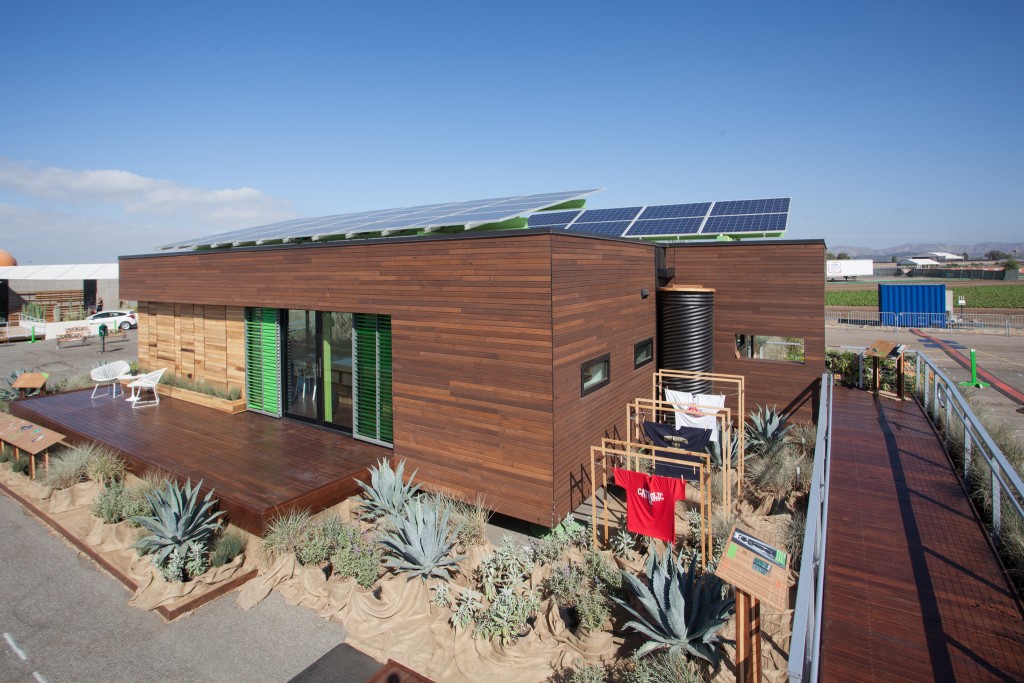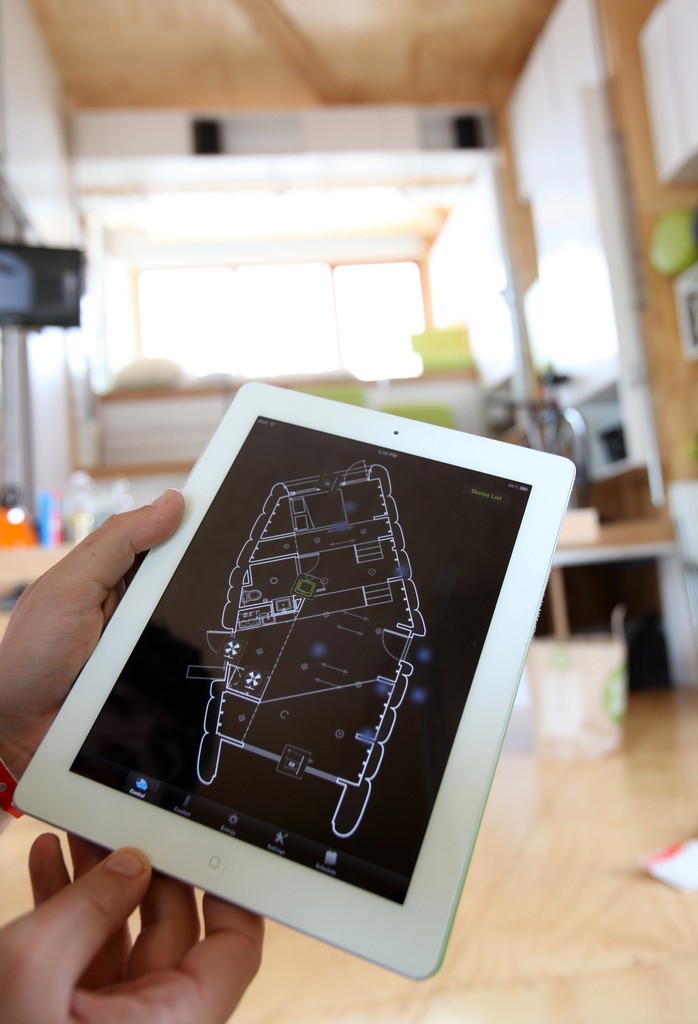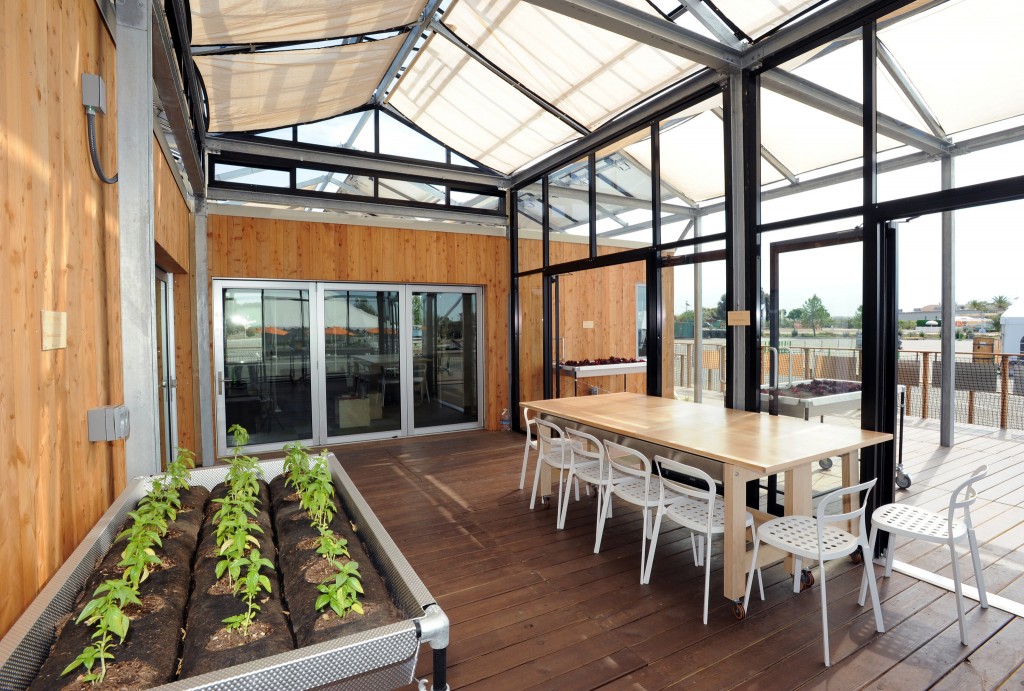Über Smart Eco-Inventions Designed by Students
Friday, September 23, 2016By Alexis Powers
Imagine building a single-family house with only hand-powered tools. Sounds crazy, right? Well, students from Clemson University built not just one such house, but two. They built a local version to stay in South Carolina and a traveling version to demonstrate this concept at the U.S. Department of Energy Solar Decathlon 2015 competition. Their Sim[PLY] construction method allows an average person to assemble pre-cut, numbered components with just stainless steel zip ties. It’s like a three-dimensional puzzle of a 1,000-square-foot home…that’s also a totally livable home.
![Students from Clemson University developed the Sim[PLY] structural building system, which uses a milling machine to cut plywood according to computer-generated cutting instructions. Photo from Clemson University Solar Decathlon 2015 Team](http://www.solardecathlon.gov/blog/wp-content/uploads/images/clem-simply.jpg)
Students from Clemson University developed the Sim[PLY] structural building system, which uses a milling machine to cut plywood according to computer-generated cutting instructions. Photo from Clemson University Solar Decathlon 2015 Team

Team Capitol DC developed an adaptable shading screen that improves energy performance in response to the exterior climate conditions. Photo from Jason Flakes/U.S. Department of Energy Solar Decathlon
While we’re at it, how about we eliminate clumsy, antiquated technologies such as light switches and remote controls? The Solar Decathlon 2011 team from the Southern California Institute of Architecture and California Institute of Technology programmed an Xbox Kinect system to be the command center of their eco-conscious home. Here, residents could use gestures to operate appliances and lights or turn on the TV just by sitting on the couch. This internet-connected house was even capable of conserving power generated by its solar panels if the forecast called for cloudy weather. Such smart home devices are still impressive five years later as the internet of things concept gains a foothold in today’s market.

Students from the SCI-Arc/Caltech team designed an iPad app to control the lights, appliances, and entertainment system of their house during the U.S. Department of Energy Solar Decathlon 2011 competition. Photo from Stefano Paltera/U.S. Department of Energy Solar Decathlon
A comprehensive list of student ingenuity would go on and on. There’s the geopolymer concrete developed by UNC Charlotte students that replaces the conventional binding material responsible for 5%–8% of the worldwide carbon footprint with a waste product from coal production. There’s also the University at Buffalo, The State University of New York’s Growlarium that essentially puts a greenhouse around a regular house, then ventilates it automatically for efficiency, comfort, and year-round vegetation production. There are enough examples to complete dissertations and start companies, both of which have been done in several cases.

A canopy covering the enclosed portion of the University at Buffalo team’s GRoW Home serves as a trellis for plants, shades the house and deck to reduce cooling loads, and provides outdoor living space. Photo from Thomas Kelsey/U.S. Department of Energy Solar Decathlon
A major goal of the Energy Department and the Solar Decathlon is to speed up delivery of emerging technologies to the marketplace. While student-driven innovation has always been present at each biennial event, the 2017 competition will feature a new Innovation Contest for the first time. With cash prizes on the line, Solar Decathlon 2017 motivates students to exercise originality, solution-driven thinking, and impact analysis like never before.
Teams participating in Solar Decathlon 2017 are now hard at work designing houses powered entirely by the sun. On September 15, the students submitted their second set of deliverables to competition organizers. Although specific details won’t likely be revealed until closer to the start of the competition on October 5, 2017, follow Solar Decathlon on Facebook, Twitter, and other social media platforms to see these ideas develop in the meantime. Prepare to be inspired.
Tags: Clemson University, North Carolina, SCI-Arc/Caltech, Solar Decathlon, Solar Decathlon 2011, Solar Decathlon 2013, Solar Decathlon 2015, Solar Decathlon 2017, Team Capitol DC, University at Buffalo
